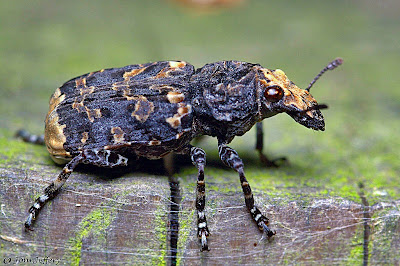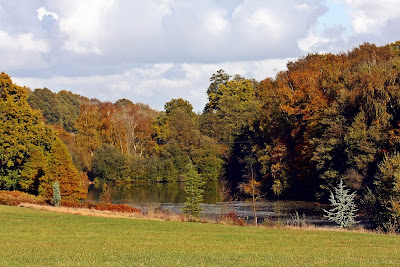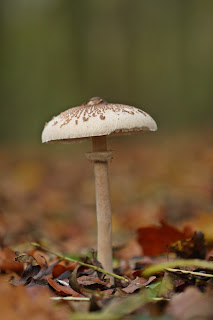As I write this text it is now a foggy late evening at the back end of November and although today has been just amazing weather for this time of year, we have to face the fact that winter will be here very soon. That in turn means invertebrate life has slowed and even stopped altogether in some cases and until the warm spring sunshine kick-starts another bug-hunting season, pickings will be few and far between.
Meantime, why not take a brief trip back to sunnier days and re-visit some of my past finds.
This white squirrel was something that I'd been trying to photograph for a while before finally it came down to ground level and posed for me. Last year my good friend Tim Ransom (well worth a visit to check out Tim's flickr photostream by the way) told me about a red squirrel that had been sighted in Seal near to Sevenoaks. There have also been some reports of black ones being seen locally too.
I have found lots of beetle larvae in the past and there can be huge differences in their appearance as the two photos above demonstrate; both are beetle larva but worlds apart. The top one I have been unable to secure an identity for but I've been told it may be a Wireworm or Click-beetle larva. The second one is of a pair of Cereal-leaf beetle larvae.
This last larva is that of a cardinal beetle.
Sometimes, in fact quite often, nature can surprise me and I'm left thinking "What one earth?..." One of those moments arose when one day I was walking local woodlands looking for a particular weevil when I came across the following insect...
Having shown this photograph to 'The experts' the best explanation seems to be that it's a small bug that has picked up a parasite somewhere that's caused this enormous appendage. I hadn't seen anything like this before and I'm happy to report since!
Whilst I didn't find the particular weevil I was seeking that day, I did, a couple of days later have the compensation of finding this one. A really nice find it was too-this is the Birch leaf-roller weevil and is a rare sight that is on the list of notifiable species that are considered to be endangered.
There are in excess of 400 species of weevil in the U.K. and so I guess it's not that surprising that from time to time I will come across some of the lesser known ones. However, a fly, is a fly, is a fly, right? Well actually no! Far from it-there may be 400 or so weevil species but they pale into insignificance when compared to U.K. fly species, of which there are...are you ready for this? O.K. .....close to 6,900 that reside here.
The first of the three photos above is of a Snake-fly-the second a Cleg-fly and the last is Sciomyzidae species; again all very different from each other.
In size U.K. flies can be anything from just 1mm to an astounding 30mm.
Every now and then something comes along that looks as though it belongs in a science fiction movie. Take this wonderful creature for instance, doesn't it look a bit like an armour plated alien? It's yet another example (as if another were needed) of just why I love nature and photographing/observing these amazing creations we all share our world with.
If I live until I'm a hundred, there still won't be anywhere near enough time to see all the insects and bugs just on our little island, let alone the rest of the world.
As it happens, there is no need to be frightened of this particular being. What is it? Actually it's a harmless Leafhopper nymph and is little more than 5mm in size.
If I haven't impressed you yet with nature's diversity, then how about this one-surely you can't fail to be impressed by this beastie?
Did you ever consider that something so strange could be living right here in the United Kingdom? After all, isn't this the kind of thing we are used to being shown by Sir David Attenborough on one of his foreign adventures?
It rejoices under the catchy title of 'Platyrhinus resinosus' and is one of our most impressive weevils in both size and colour.
The last of my reminiscences for now is this uber-rare water gremlin. These are hardly ever seen by humans as they are shy creatures and live in water droplets. They are usually to be found around springtime and especially on April 1st...or so the legend goes!
Only one thing left to do now and that's provide you with an answer to my 'guess the photo' from the last blog entry. It was in fact a close-up of a Leopard slug. To be precise it is the respiratory pore, or pneumostoma.
Leopard slug
That's it then, until the next time...









































